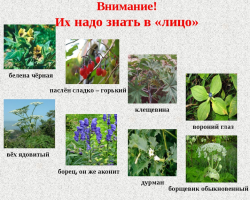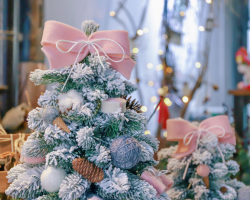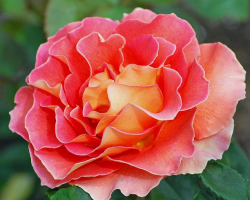This article describes the structure of the reproduction of the flower - pestle and stamens. You will find out how this process occurs in plants.
Content
- Flower - Pestle and Stamens: the main parts in the propagation organs
- The perianth consists of stamens, pestlers, corolla, cups: Flower structure features, drawing
- Video: Flower structure. Fertilization and formation of the fetus
- Pestle and stamens in the plant - female, male propagation department: general information, why are these the main parts of the flower?
- Stagger structure and functions: features, boiler, photo
- What is the structure of the pestle: features, the role of a column and ovary, photo
- Better and separate flowers - what is it: to what type does a flower have, which has both pestlers and stamens?
- The concept of one -day and dioecious colors: what is their pestle and stamens formula, an example of reproduction?
- Flower biorhythms - pestle and stamens: useful information about reproduction
- Video: Plant sexual reproduction
- Video: Propagation of flowering plants
Flowers are truly unique plants. They not only attract attention with their appearance, but are also a source of useful substances. They have everything unusual, including the propagation method. From school lessons in biology, one can recall the names of the main “genital organs” of plants - a pestle and stamens. But what is it and what functions do these parts of plant crops perform?
Read on our website article with riddles on biology. The information located in it will help to prepare for the visitor lesson on this subject.
If you need to help your child complete your homework on this topic, then the article will help you. It has a lot of useful information that will help to recall the material. If the student himself performs the task, then the article will help to find the correct answer to the question and formulate the thought. Read further.
Flower - Pestle and Stamens: the main parts in the propagation organs

The upper flowering part of the plant, which we are used to admiring, is nothing more than the propagation organ in plants. A flower with a pestle and a stamens - this is the reproductive system of representatives of the Flora world, its main parts.
It grows on shoots, which can be several on plants. This form of formation of colors is called an inflorescence. They are divided into 2 groups - Simple and complex.
- Simple inflorescences. On their surface are all the flowers located on the main axis of the escape.
- Complex inflorescences. They are characterized by the presence of not individual flowers, but several small branched inflorescences on the main axis of the shoot. They reflect the main structure of the flower.
Usually inflorescences are formed by small colors, while large flowers grow separately. But it is the small flowers collected together that form a structural inflorescence and give a strong aroma of nectar. This smell attracts insects, which subsequently transfer the pollen from one culture to another, pollinating it.
It is worth knowing: More grains and fruits are formed in inflorescences than in separate flowers. Thanks to this, the reproductiveness of cultures increases, which makes their propagation process more effective and intense.
Some inflorescences look like one large flower. This is the result of a long process of evolution. A similar phenomenon can be observed in sunflower, chamomile, viburnum, cornflowers and many other plants. It is large and bright petals that attract the attention of insects that collect nectar, so they are able to pollinate several plants at once in one approach.
The perianth consists of stamens, pestlers, corolla, cups: Flower structure features, drawing

Flowers have their own structural features, which are largely the same and different at the same time. But absolutely all plants have such structural components - features of the structure of the flower (above in the figure):
- Fertonal. This name was received by the last knot located on the stem of the plant.
- Receptacle. This is the place where the flower is opened. It is a special organ like a frame. It is on it that the entire main structure of the floral plant is located.
- Around the flower grinder is a perianth. It performs, first of all, protective functions. In other words, it protects the organs of the reproductive system of culture - a pestle and stamens.
Interesting: The perianth attracts insects to the flower. Some perianths are able to form corolla. This is the name of the set of petals from the inside of the flower. They have a bright and rich color, and also serve to attract insects that collect pollen.
And all this complex structure of the flower is intended for only one - the performance of reproductive function. Stream, pestle, corolla and cups of fruit and berry plants, play an even more responsible role. They are responsible for the formation of the ovary, from which over time a full -fledged fruit is formed.
Video: Flower structure. Fertilization and formation of the fetus
Pestle and stamens in the plant - female, male propagation department: General information, why are these the main parts of the flower?

As already noted, stamens and pestle are reproductive organs of flowers. According to their names, it may seem that stamen is a female reproduction organ, and the pestle is male. But in fact, everything is exactly the opposite. Here is general information:
- Stream at the flower - The male part of the reproductive system of the flower in which pollen forms.
- Pestle in plants - It is a female part of the reproductive system.
Each of these departments has its own structure, features and functions. Knowing them, you will be even more convinced that a flower is one of the most amazing plants among all representatives of the kingdom of Flora.
Why are pestles and stamens the main parts of the flower? Here's the answer:
- Stamen - The most important part of the flower. It plays a huge role in the fertilization of the flower, and is also necessary for the formation of pollen, with which the reproduction of flower plants occurs. It is formed by two parts - anthers and stamens.
- Pestle - No less important for the process of breeding the plant. Without the female department of the reproductive system, the plant simply cannot multiply. Depending on the features of the structure, a plant culture can be equipped with one or several pestles at once.
Below even more useful information. Read further.
Stagger structure and functions: features, boiler, photo

As mentioned above, stamens are formed in two parts - anthers and stamens. Features of the structure and stamens (see the photo above):
- The anthers can be distinguished two more parts.
- They are specific bags where pollen accumulates. And it is contained in special nests that are attached to the bags of anthers.
- Each flower can have one or more stamens. And in individual varieties of plants, the number of male departments of the reproductive system can reach even several thousand.
Interesting: The totality of stamens has a scientific name - Androtse. It is circular and spiral - it all depends on how parts of the reproductive department are located.
In some cases, stamens are even able to grow together - partially or completely. For example, in pumpkin crops, the fusion of stamens is predominantly total. Also, sometimes the pestle fuses with the stamens, forming a new, special organ - a column. A similar process can be observed when growing orchids.
What is the structure of the pestle: features, the role of a column and ovary, photo

The formation of a pestle occurs when one or more fruitlessness is fused. Its structure is simple (in the photo above). It contains the rudiments of the seeds and a special tract, which contains the ripening pollen up to the moment of the fertilization.
The pestle has its own structure. It is formed by three parts, each of which performs the functions assigned to it. Below you will find the features of this part of the plant, as well as the role of a column and ovary. The main structural units of the female reproductive organ of the plant:
- Ovary. It is the base of the pestle and is located in its lower part. After the process of fertilization in this area, further maturation and development of seeds occurs. Read more about what is an ovary in a plantRead in another article on our website.
- Column. This is the sterile part of the pestle, which originates from the ovary and gradually flows into the stigma. Its main role is frame, supporting. The pestlers are divided into open, closed and half -closed. It all depends on how pronounced the process of fostering style is.
- Stigma. This is a separate organ whose main task is the extraction of pollen. Simply speaking, he catches her and delivers it to the pestle.
So the female organ of the reproductive system of the flower is arranged - a pestle. It is not difficult to distinguish it from the stamens. The pestle is at the very bottom, at the base of the flower petals, while stamens can be located on the sides, or localized at the very top, at the edges of the petals.
Better and separate flowers - what is it: to what type does a flower have, which has both pestlers and stamens?

Each flower can have only one reproductive organ or immediately a set consisting of a pestle and stamens simultaneously. Such crops are called bisexual and separately. What it is? What type does a flower have, have both pestles and stamens?
- Bolished flowers. At the same time they have a pestle and stamens. This category includes tulips, lily, potato color, etc.
- Separate flowers. These are cultures that have only a female or only male reproductive organ - a pestle or stamens, respectively. Such representatives of the flora include oak, corn, etc.
It is noteworthy that there are plants on which 2 varieties of flowers are formed at once - bisexual and separately. A similar process can be observed on cucumbers and some other garden and field crops.
Interesting: It is customary to denote pestle and stamens in botany with special signs. So, plants with only female genitalia are marked by astrological a sign of Venus. But for the identification of male individuals, it is used symbol of Mars.
The concept of one -day and dioecious colors: what is their pestle and stamens formula, an example of reproduction?

It is worth noting that different plants may have a different pestle and stamens formula. Both stamberry and pestle flowers are often located on the same plant. Thanks to this, the culture becomes capable of self -pollution, and does not need third -party help. Representatives of the world of the flora, which are characterized by this quality, are called in botany one -day. Examples of this group of cultures can serve as pumpkin and cucumbers.
But there is another category of plants, which is called dioecious. In this case, female and male individuals are located on different copies of plant crops. Therefore, to ensure the pollination process, the participation of insects is necessary. Widely known representatives of this group are nettle dioecious, willow, aspen.
There is also the concept of asexual plants. They are talking about when there are no sexual reproduction organs on the surface of culture.

Below you will find an example of the propagation of dioecious plants. If everything is simple and understandable with single -day plant crops, then the peculiarities of the reproduction of dioecious specimens cause some bewilderment. In fact, there is nothing supernatural in this process, but this process is really interesting. Consider on a small example how pollination occurs in dioecious plants.

- Everyone knows a tree called poplar. This is also a typical representative of the category of dioecious plants.
- In the spring, male poplar individuals begin to scatter pollen, and in the summer female specimens of plants spread white fluff. It is in such an unusual and interesting way that this tree is propagated.
- Poplar fluff contains seeds that do not scatter and are not lost precisely thanks to down threads. They are firmly attached to them and can calmly fly away from the wood-rower over significant distances.
- The same unusual and interesting method of reproduction is also characteristic of dandelions.
Since dioecious plants need the participation of insects in the process of pollination, the yield of fruit and berry crops and vegetables largely depends on how active they are wasps, bees, hornets etc. The higher their activity, the better the crop. And, therefore, the lower it is, the less chance of intensive and rich fruiting of individual garden and garden crops.
Flower biorhythms - pestle and stamens: useful information about reproduction

A flower is a living organism that also has its biorhythms. He tends to be awake and in a state of sleep - like a person, animals, etc. to understand in which phase the plant is currently located in the state of his petals. They close and open depending on the time of day. In addition, a variety of floral culture also affect biorhythms.
A simple example of flower hours:
- Tsikoria and Kozloborodnik. These plants open in 3-4 hours in the morning And they remain in this position until the evening.
- Poppies and rosehips wake up in 5 o'clock in the morning.
- Barvinok, dandelion, bell. These plants begin to open about 6 a.m.
- Velvetsy and bindings. The period of their awakening and activity falls on 8 am And lasts until the evening.
- Marigold. These flowers are revealed in 9 am.
Starting from lunch, and before the evening, the flowers gradually begin to confuse. This means that they close, go into the phase of sleep. The specific time of the complete close of the petals depends on the variety of floral culture. For example:
- Field cloves are closed at about 1 in the morning.
- The time of transition to the sleep phase of cactus flowers falls at 2 a.m.
- Dandelion begins to close at 3 a.m.
- Greek woman closes her petals in the morning - approximately at 4 hours.
- The white water lily closes at 5 o’clock in the morning, etc.
Each plant has its own special biorhythms. And they most directly affect the reproduction of culture. Here are another interesting information about reproduction, pestlers and stamens:
- Based on the foregoing, in the world of flora there are green plants and plants. They are bisexual and separately.
- In the first case, the flowers are characterized by the process of self -pollination.
- But for the propagation of separate cultures, the help of insects is necessary - OS, bees, etc. They carry men's gametes to a female plant.
- This is the only way to pollinate the pollination process for further reproduction of the plant.
Now you know the structure of the flower, and how plants multiply. To fix the material, try to tell you about the process of breeding the plant on your own pictures above. Also watch the video below, which describes in detail about this process.
Video: Plant sexual reproduction
Video: Propagation of flowering plants
Read on the topic:
- Viruses - biology: brief presentation, structure scheme
- Message about Meduses on Biology: Definition, where do they live?
- What is homozygous and heterozygous organisms in biology?
- Biology - bacteria: types, names, harmful and useful for human life
- Biology - infusory of the shoe: Features of the structure







